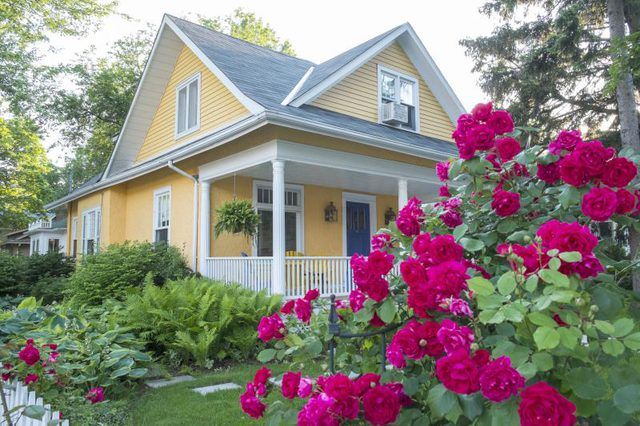Bulbs
Flower Basics
Flower Beds & Specialty Gardens
Flower Garden
Garden Furniture
Garden Gnomes
Garden Seeds
Garden Sheds
Garden Statues
Garden Tools & Supplies
Gardening Basics
Green & Organic
Groundcovers & Vines
Growing Annuals
Growing Basil
Growing Beans
Growing Berries
Growing Blueberries
Growing Cactus
Growing Corn
Growing Cotton
Growing Edibles
Growing Flowers
Growing Garlic
Growing Grapes
Growing Grass
Growing Herbs
Growing Jasmine
Growing Mint
Growing Mushrooms
Orchids
Growing Peanuts
Growing Perennials
Growing Plants
Growing Rosemary
Growing Roses
Growing Strawberries
Growing Sunflowers
Growing Thyme
Growing Tomatoes
Growing Tulips
Growing Vegetables
Herb Basics
Herb Garden
Indoor Growing
Landscaping Basics
Landscaping Patios
Landscaping Plants
Landscaping Shrubs
Landscaping Trees
Landscaping Walks & Pathways
Lawn Basics
Lawn Maintenance
Lawn Mowers
Lawn Ornaments
Lawn Planting
Lawn Tools
Outdoor Growing
Overall Landscape Planning
Pests, Weeds & Problems
Plant Basics
Rock Garden
Rose Garden
Shrubs
Soil
Specialty Gardens
Trees
Vegetable Garden
Yard Maintenance
About Knock Out Roses
About Knock Out Roses. Cherry-red Knock Out rose (*Rosa "Radrazz"*) arrived on the gardening scene in 2000, bringing the hope that an easy-care rose was finally here. An abundantly blooming shrub rose, "Radrazz" is hardy in [**U.S. Department of Agriculture plant hardiness zones**](http://planthardiness.ars.usda.gov/PHZMWeb/) 5...

Cherry-red Knock Out rose (Rosa "Radrazz") arrived on the gardening scene in 2000, bringing the hope that an easy-care rose was finally here. An abundantly blooming shrub rose, "Radrazz" is hardy in U.S. Department of Agriculture plant hardiness zones 5 through 11. Orange-red hips and purple or burgundy fall foliage add to its charms. Several Knock Out cultivars followed the best-selling "Radrazz," and widespread planting has tested their advertised shades and disease tolerances with somewhat mixed results.
The Rest of the Family
Pink cultivars include Pink Knockout (Rosa "Radcon"). It features shocking pink blooms against dark, moss-green leaves. Blushing Knockout (Rose "Radyod") has bluish-green leaves; its blush-pink flowers gradually soften to shell pink.
Rainbow Knock Out (Rosa "Radcor" ) boasts 2-inch-wide, yellow-centered, coral-pink flowers. Its green leaves have hints of burgundy in fall. The only fragrant cultivar, Sunny Knock Out (Rosa "Radsunny"), has deep-green foliage, and its pale-yellow flowers become creamy white as they age.
Dense, double flowers with up to 24 petals each distinguish Double Knock Out (Rosa "Radtko") and Pink Double Knock Out (Rosa "Radtkopink"*) Seven to 12 petals are typical for the single-flowered cultivars.
Sunny Knock Out is hardy in USDA zones 4 through 11, and the other cultivars are hardy in USDA zones 5 through 11. All Knock Out roses are deciduous, meaning they drop their leaves in fall.
Shade Tolerance
Knock Out roses are billed as blooming in partial shade, with only three hours of daily sun exposure. Most roses (Rosa spp.) need five to six hours of sun exposure each day to bloom at all.
The catch is that Knock Outs won't have continuing flushes of flowers without six to eight hours of daily sun. When they receive anything less, gardeners' dreams of nearly non-stop color turn to disappointment. If shade is unavoidable, filtered afternoon shade is best.
Not Quite Carefree
Knock Out roses are frequently described as compact shrubs reaching a mature, 4-foot height and spread. Horticulturists at Louisiana State University Agricultural Center, however, caution that Knock Outs often grow larger without twice-yearly pruning.
They advise pruning the roses' height back by two-thirds prior to the first spring bloom and again by one-third in late summer or early fall. Use clean, sharp pruning shears disinfected with a rag dipped in rubbing alcohol between cuts.
From early to late spring, Rainbow Knock Out benefits from monthly fungicide applications to prevent black spot. A ready-to-use fungicide containing chlorothalonil can be sprayed on a cool, clear, windless, dry day until it drips from the foliage to protect the plant against black spot. Always wear goggles and protective clothing to cover your skin, and follow the label's precautions when working with a fungicide.
All other Knock Outs have excellent resistance to fungal diseases.
Rose Rosette Virus
Tiny, sap-feeding eriophyid mites infect Knock Outs with the deadly rose rosette virus. Its symptoms include twisted, distorted, bright-red leaves, soft, exceptionally thorny stems and short, bushy branches called witches' brooms.
Tools used on an infected plant -- even one without symptoms -- also transmit the virus unless disinfected with rubbing alcohol between cuts and after use.
As a systemic virus, incurable rose rosette can't be pruned away. Dig up symptomatic plants, roots included, and dispose of them in sealed plastic bags before they spread the disease. The mites, which can't be seen by the naked eye, are resistant to miticides.
The Bug Picture
Sunny Knock Out faces more insect problems than the other cultivars. Thrips blemish the buds with brown scarring. Aphids mass on young stems and leaves and drench the plants with transparent, gooey honeydew.
Ready-to-use neem oil suffocates the bugs when sprayed to coat all the plant's surfaces. The organic oil is safe for use on well-watered plants at temperatures below 90 degrees Fahrenheit.